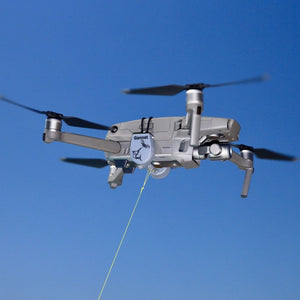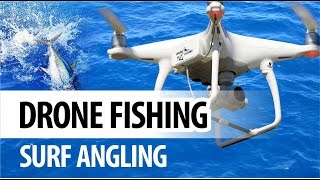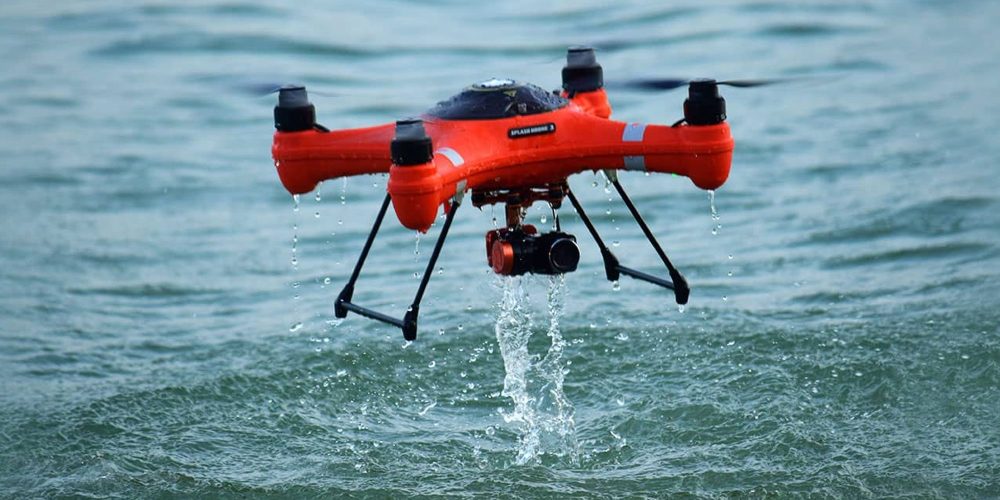
If you are an avid fisherman who lives in Australia, you may be able to use a drone and get an aerial view around the waters. The drones can be equipped with a variety of features, including a GPS positioning system, a GPS receiver, a GPS receiver, a GPS payload release, and an angle adjustable camera. You can also buy fishing lines that you can use for fishing, which are designed to be extremely stable and secure. The SKY RIGGER drone is one such example.
The drone fishing line SKY RIGGER can be used for spotting fish.
The SKY RIGGER fishing line system for drones allows you fly fish and is flexible. It has two rotating leg clamps, which can be mounted to many drone models. The release mechanism features a bayonet-style connection, and a cam lock arm that allows you to quickly open the line clamps. Sky RIGGER is unlike other drones and can be used for all types of fishing.
The SKY RIGGER has an automatic release mechanism for when a fish strikes your fly. You can also manually release the line using your hand or rod. This feature is available for all models of the SKY RIGGER. It is recommended that you purchase a Phantom 3 before purchasing the new SKY RIGGER. These are the pros and cons of this new line system.
It can be set up to release a payload mechanically
A good drone's mechanical payload release is one of its most important characteristics. Many of them make it possible for the anglers easy to release the fishing lines. Some models, however, do not include a release mechanism. To release the drone, one must "yank" the fishing lines. This can be awkward, especially for people who don't like using their hands to release line.

Another important feature of the drone's payload release system is its size. When a fish strikes, the payload must be able release the line from the drone. It is important to practice catch and release fishing before trying this method, as you can't simply pull the fish to shore and release it back into the water. Many have had positive experiences with the DJI Phantom. This technology is not yet at the same level as the fishing drones on the market.
It features a GPS positioning device
Rippton, a joint venture between Australia and the Netherlands that specializes on technology-oriented fishing products, is called Rippton. Its goal is improve anglers' success by creating products that enhance the fishing experience. Rippton's Mobula drone features a GPS positioning system and a remote release. The Mobula drone can store bait at the top, protect against kite clippings, and is eco-friendly.
It weighs only 3 pounds and can fly for as long as 18 minutes. It is also equipped with a high-tech GPS system that allows it to control it from up to 2,000 yards away. It has a range of 1000 meters, or half a mile, and is equipped with intelligent flight modes. The point of interest feature allows it to take high-quality photos of its surroundings. You can see great images of fish thanks to its high-resolution digital camera.
It features a failsafe function
Aerokontiki's drone fisherman has a failsafe feature. It monitors the battery level, and releases the line when it is needed. It will return to dry ground if it experiences a battery failure and continue its mission. It is equipped with industrial-grade flight controllers that can be used anywhere, without the need for calibration. This drone is also waterproof, so you can use it even in the most difficult water spots.

FAQ
Which US states allow drones?
You can legally fly a drone for personal use. Federal Aviation Administration (FAA), has issued guidelines that allow you to use small unmanned aircraft systems (UASs). Before UASs can be flown, they must be registered with FAA. These UASs can also be flown by commercial operators if they are allowed to fly under certain conditions.
What are the rules for operating drones?
Registering your drone with FAA is required. The registration process requires you to provide information about your device, such as its weight, dimensions, battery capacity, operating frequency, and battery life. This registration process requires that you obtain an FAA identification code.
What is it like to travel by drone?
Drones are increasingly becoming popular both for personal and commercial use. They are used for video, filming aerial mapping, search &rescue, and many other purposes. The FAA has recently approved several new drone regulations, which include requirements for registration, licensing, pilot training, and insurance. These changes will help ensure that drones stay safe for all.
Is the FAA able to regulate drones?
The FAA supervises all aspects related to drone operations, including certification requirements and safety standards.
Is it possible to fly my drone in my backyard?
Yes! These are called UAVs (unmanned aerial vehicles). There are many different types of drones that you can buy today, including small quadcopters as well as large fixed-wing aircraft. The FAA recently released new rules for commercial UAV use, meaning that they are now legal to fly for business purposes. It is important to remember that UAVs are not allowed near airports.
Can you fly a drone high without a licence?
There is no restriction on the height at which you can fly a drone according to the FAA. You will need to register your unmanned aircraft system (UAS), including the registration number and model name, weight, dimensions, serial number, manufacturer's number, date manufactured, and any other information.
Is it possible to buy a drone from overseas?
You can find many different types of drones online. Some people prefer to buy drones online via Amazon, eBay and Walmart. Some people prefer to buy their drones directly from the manufacturer.
Statistics
- According to Indeed, a drone pilot gets paid $25.73 per hour on average in the US. (dronesgator.com)
- Research and Markets predict a growth rate of 51.1% over the next five years. (thedroneu.com)
- With the top 10% making over $100/h and the bottom 10% making as low as $10/h. (dronesgator.com)
External Links
How To
How to Fly Drones at a Beginning Level
A drone is a remotely-controlled aircraft that is used for aerial photography and surveillance. Drones have been in use since World War II. DJI's Phantom series of quadcopters was the first to be commercially used. There have been many drones made since then. These range from beginner-friendly drones like Parrot AR Drone 2.0 to more advanced multi-rotor craft like DJI Mavic Pro.
There are many ways to fly a drone.
-
Remote control – This is when you attach a device to your hand that allows you to control the drone's flight path. There are two main types, On/Off switches (like radios) and joysticks.
-
Manual Control – This method lets users remotely control the drone by using a smartphone app. The app will give you instructions.
-
Autonomous Flight: This means that the drone will take care of all the piloting. It basically flies autonomously without any human intervention. The drone must be equipped with a camera and sensors that can capture images and data in order to fly autonomously.
-
Triggered Flight: This is similar in concept to manual control. The pilot manually creates a route and the drone then follows it until it reaches that endpoint. After the preprogrammed route is complete, the drone will automatically land and return to its base.
-
Landing Gear: Some drones have landing gear that allows them safely to land in case they lose power or run low on battery.
-
Goggles – Pilots often wear goggles while flying to keep themselves safe from any debris.
-
Camera - You can capture photos and videos with your drone from the air.
-
Obstacles. Some drones can have obstacle avoidance technology that stops them from hitting obstacles.
-
Speed - Some drones can reach speeds of over 40 mph.
-
Battery Life - Most drones can last between 20 minutes to 3 hours, depending on how much power you're using.
-
Distance - Some drones can travel up 30 miles depending on the model.
-
Power source: Some drones will require an external power source while others can be powered by internal batteries.
-
Weight - Some drones can be as light as 1 pound while others can reach 4 pounds.
-
Size - The size of drones varies from small, easily carried devices to more substantial crafts that weigh in excess of 50 pounds.
-
Price - From high-end models that cost thousands of dollars to low-cost options that start at $100, all drones fall under a certain price category.